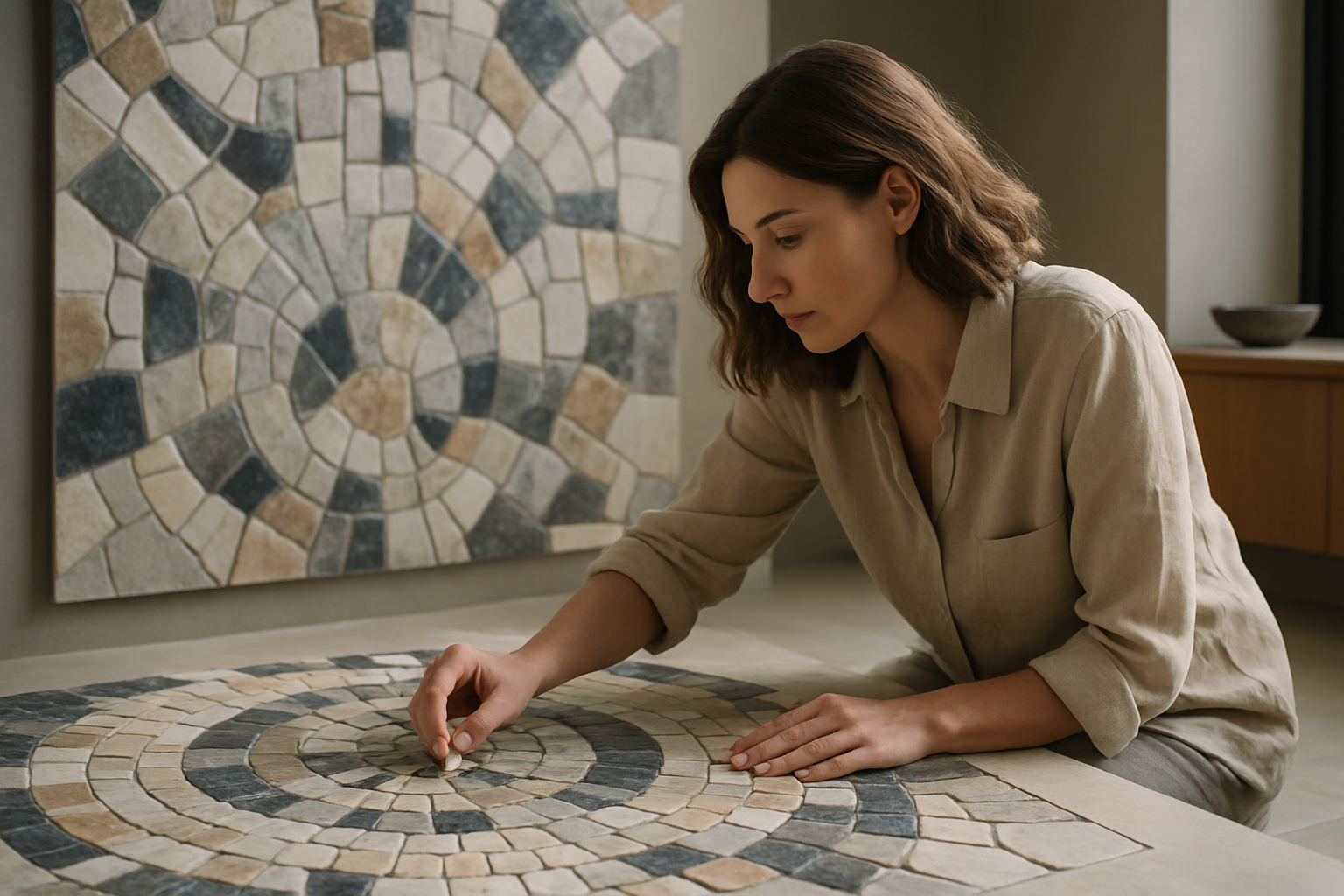Designing with Soul: How Cultural Identity and Modern Trends Are Reshaping Interior Spaces
As homeowners and designers seek deeper meaning in living spaces, cultural identity is resurfacing as a defining force in modern interior design. Combined with digital retail innovations, maker tools, and research-backed color and lighting strategies, this movement is producing personalized, emotionally resonant homes across the U.S.

The intersection of cultural heritage and contemporary design has transformed how people approach their living spaces. Rather than following fleeting trends, many individuals now prioritize authenticity and personal narrative in their interior choices. This approach creates homes that serve as both comfortable retreats and meaningful reflections of identity, bridging past traditions with present-day lifestyles.
Modern interior design increasingly recognizes that spaces should tell stories. Homeowners incorporate artifacts, textiles, and design motifs from their cultural backgrounds, creating environments that feel genuinely personal. This practice extends beyond simple decoration, influencing spatial layouts, color selections, and material choices that resonate with ancestral traditions while accommodating contemporary living requirements.
What Role Does Cultural Identity Play in Contemporary Interior Design?
Cultural identity manifests in interior spaces through deliberate choices that reflect heritage, values, and personal history. Many designers now encourage clients to explore their roots when making design decisions, resulting in spaces that incorporate traditional patterns, handcrafted elements, and symbolic colors meaningful to specific cultures. This approach creates authenticity that mass-produced decor cannot replicate.
The integration of cultural elements often involves researching traditional craftsmanship techniques, understanding symbolic meanings behind certain designs, and adapting historical aesthetics to modern contexts. For instance, someone with Japanese heritage might incorporate shoji screens and minimalist principles, while those with African roots might feature bold geometric patterns and natural materials like woven baskets and carved wood.
This cultural consciousness extends to supporting artisans and craftspeople from various communities, ensuring that traditional skills remain viable and that cultural narratives continue through physical objects. The result is living spaces that educate, inspire, and connect inhabitants to broader cultural conversations.
How Are E-commerce and AR Tools Transforming Interior Design Decisions?
Digital platforms have revolutionized how people discover, visualize, and purchase interior design elements. Online marketplaces now offer unprecedented access to global artisans, vintage pieces, and culturally specific items that were previously difficult to source. This democratization allows individuals to curate spaces that genuinely reflect their diverse influences regardless of geographic location.
Augmented reality applications have become particularly valuable tools for homeowners and designers. These technologies allow users to virtually place furniture and decor items in their actual spaces before purchasing, reducing uncertainty and potential returns. Users can experiment with different arrangements, colors, and styles, making more confident decisions about how cultural pieces will integrate with existing elements.
Virtual showrooms and 3D room planners enable exploration of various design scenarios without physical commitment. This technology proves especially useful when incorporating culturally significant pieces that may have unconventional dimensions or require specific placement considerations. The ability to preview how a traditional rug, ancestral artwork, or handcrafted furniture piece will appear in context helps maintain design cohesion while honoring cultural authenticity.
What Is the Maker Movement and How Does It Influence Interior Spaces?
The maker movement represents a cultural shift toward valuing handcrafted, locally produced, and personally created items over mass-manufactured goods. This philosophy aligns naturally with culturally conscious interior design, as both prioritize authenticity, craftsmanship, and meaningful objects. Participants in this movement often learn traditional skills, create custom pieces, or commission local artisans to produce unique items for their homes.
This approach encourages people to engage directly with the creation process, whether through woodworking, textile arts, pottery, or metalwork. Many individuals now incorporate DIY projects that reflect cultural techniques passed down through generations, creating pieces with personal and historical significance. The maker movement also supports local economies and preserves traditional crafts that might otherwise disappear.
Community workshops, online tutorials, and maker spaces have made traditional craftsmanship more accessible to broader audiences. People can learn techniques like weaving, wood carving, or natural dyeing, then apply these skills to create culturally resonant pieces for their homes. This hands-on engagement deepens the connection between inhabitants and their spaces, as each handmade element carries both personal effort and cultural meaning.
How Can Traditional and Modern Elements Coexist Harmoniously?
Successful integration of cultural identity with modern trends requires thoughtful balance. The key lies in identifying core elements from traditional aesthetics and reinterpreting them through contemporary lenses. This might involve using traditional patterns in modern materials, scaling ancestral motifs for current spatial proportions, or pairing heritage pieces with minimalist contemporary furniture.
Color palettes often serve as effective bridges between old and new. Traditional colors can be applied in modern ways, such as using culturally significant hues in accent walls, contemporary artwork, or sleek furnishings. Similarly, traditional materials like natural fibers, clay, or reclaimed wood can be fashioned into modern forms that honor their origins while serving current functional needs.
The most successful spaces avoid creating museum-like displays or theme park aesthetics. Instead, they integrate cultural elements as natural components of daily life, allowing traditions to inform rather than dominate the design. This approach creates environments that feel lived-in, authentic, and relevant to contemporary lifestyles while maintaining strong connections to cultural heritage.
What Practical Steps Support Culturally Conscious Interior Design?
Beginning with research proves essential for anyone seeking to incorporate cultural identity into their spaces. This involves exploring family history, traditional design principles from relevant cultures, and contemporary interpretations by designers from those communities. Consulting with cultural experts or designers who specialize in heritage-informed work can provide valuable guidance and prevent appropriation or misrepresentation.
Sourcing authentic pieces requires patience and intentionality. Rather than purchasing mass-produced items marketed as ethnic or cultural, seek out actual artisans, fair-trade organizations, or reputable dealers specializing in authentic cultural goods. This approach ensures quality, supports traditional craftspeople, and guarantees genuine cultural significance rather than superficial imitation.
Documenting the stories behind cultural pieces enhances their meaning within the space. Whether through written descriptions, family narratives, or visual displays that provide context, helping household members and guests understand the significance of objects deepens appreciation and preserves cultural knowledge for future generations.
How Do These Trends Reflect Broader Social Movements?
The emphasis on cultural identity in interior design mirrors larger societal conversations about representation, authenticity, and globalization. As communities become more diverse and interconnected, people increasingly seek ways to maintain distinct cultural identities while participating in broader contemporary culture. Home environments become spaces where this negotiation happens daily, allowing inhabitants to express complex, multifaceted identities.
This movement also reflects growing awareness about consumption patterns and their impacts. Choosing culturally significant, handcrafted, or locally produced items often aligns with sustainability values, as these pieces typically involve less industrial production and longer lifespans than mass-manufactured alternatives. The intersection of cultural preservation, environmental consciousness, and personal expression creates a compelling framework for making interior design decisions.
Ultimately, designing with cultural consciousness represents a rejection of homogenized aesthetics in favor of spaces that celebrate diversity, honor heritage, and reflect genuine human experiences. As technology continues making global influences more accessible and the maker movement empowers individual creativity, interior spaces increasingly serve as canvases for cultural storytelling and personal authenticity.




